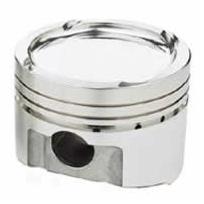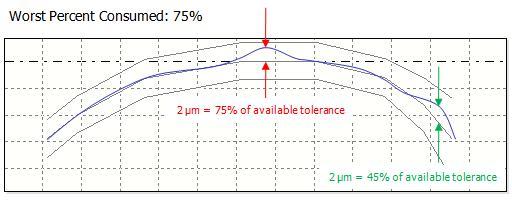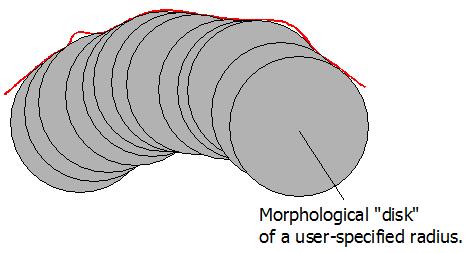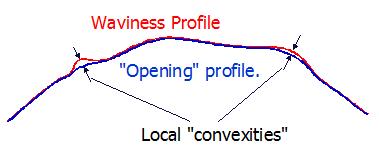OmniProfile
Control Critical Profile Shapes
Here’s something that you may not know: many, highly critical “cylindrical” surface are not actually very cylindrical. OmniProfile (formerly ProfileMaster) helps you analyze cylindricity on highly stressed roller bearings, pin-bores on pistons, and other nominally cylindrical components.
Roller bearings
In many highly stressed applications the cylindrical roller cannot be “too cylindrical” – otherwise severe edge loading will occur. Perfectly cylindrical surfaces in contact always have higher stresses at the edges. Furthermore, this edge loading can worsen if the roller is slightly misaligned or if the components bend or distort during operation. By putting a tightly controlled “crown” on the roller (making it barrel-shaped) at the micrometer level, the loading of the bearing can actually be made more consistent over the length of the bearing. The following figures show how different types of surface profiles induce different kinds of contact stresses at low and high loading.

As we can see above, the cylindrical roller actually induces the highest stresses at the corners. By blending the corners these high stresses can be reduced. Ultimately, the logarithmic roller provides the most even distribution of stresses.
Piston pin bores
The piston pin bore carries the entire load of combustion. As a result, you might think that pin bores would have to be some of the most cylindrical shapes in an engine.

If you thought these pin bores were super cylindrical, you’d be wrong! A perfectly cylindrical pin bore would lead to edge loading and edge loading could cause elevated contact stresses, a breakdown in lubrication and, in some cases, complete engine failure. Good pistons have pin bores that actually get larger near the inner and outer edges. Chances are pretty good that the car you’re driving has “bell-mouthed” pin bores… by design!
So here’s the challenge:
These surface shapes are very critical to the operation of the components. However these shapes are on the order of typical surface texture features. So how do we assess the “shape” in the midst of the “texture”? Furthermore, if we have some nominal shape that we are shooting for, how do we assess the errors relative to it?
OmniProfile is up to the challenge!
Digital Metrology Solutions has developed the OmniProfile package with these difficult shapes in mind. OmniProfile is a complete profile geometry and surface texture package all in one!

Not all tolerances are created equally…
One unique aspect of these critical profiles is that certain areas of the profile must be controlled to tighter tolerances. Let’s look at one side of a typical pin bore profile:

The outer edge (on the right of the graph) actually gives a larger tolerance. This outer edge is less critical – thus the tolerance in this area is larger. This creates a special challenge in that a 2 micrometer error at the middle of the profile may be pushing toward the tolerance limits, but a 2 micrometer error at the edge of the profile may be quite acceptable. OmniProfile addresses this very nicely with a “Percent Consumed” approach to assessing profile errors.

Dealing with stress-causing features
Even if the profile is within the tolerance zone, there may still be local features (like “bumps”) that can cause elevated stress. OmniProfile incorporates local convexity analysis – a powerful new tool for understanding the “bumps” that cause “stresses”. For example, this profile has a “bump” on the left side. In some applications, bumps such as these can cause major product failures. Traditional waviness parameters like “Wt” would not detect this bump as it falls inside the total peak-to-valley range of the profile.

OmniProfile can help you detect and put a number to these features. Here’s how it works… OmniProfile allows you to roll a disk under the waviness profile. This is called a “Morphological Opening Filter” and in case you are wondering… yes, you get to choose the radius.

The upper path of the disk is the “opening profile”. If we look at the gaps between the opening profile and the measured data set – we can clearly see the local convexities (or “bumps”) that have a radius sharper than the disk. The height of the highest local convexity per this method is designated Wcvx. Wcvx (meaning “waviness convexity”) has been shown to correlate very well with stress models and with component performance issues.

Here’s how it looks on an actual profile. (Note: this profile is from the OmniProfile “Crown Drop” display — OmniProfile also includes traditional “drop analysis” the drop locations are shown with gray lines.)

What about roughness and waviness?
Glad you asked. OmniProfile provides roughness and waviness analysis along with your geometry analysis. Gaussian and Robust filters are included and you get a full set of roughness, waviness and profile parameters.

With one trace OmniProfile can give you everything that you need! OmniProfile can handle data files from most major instruments. It includes auto-loading of data sets for production integration as well as exporting of results for SPC systems.
System requirements
- Windows 10 or later (64-bit)
- 2 GB RAM or better
- 1080p graphics (at 100% zoom) recommended for optimal viewing experience.
